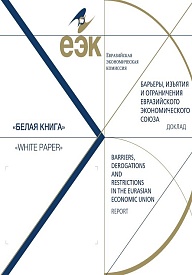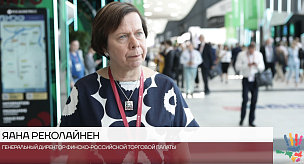This report continues the systematic work of the Eurasian Economic Commission (EEC) for implementation of the «four freedoms» of the Eurasian Economic Union (EEU), namely, free movement of goods, services, capital and labor. The paper starts with a brief analysis of the situation in the Unions internal markets from 2015 to 2016. Among other things, the authors note that the largest contribution to building up the volume of trade among the member states was made by the trade turnover between the Russian Federation and the Republic of Belarus. Also, the experts mention that growth may be seen of demand for products with high added value.
The authors outline methodological approaches to classification of obstacles in the internal market of the Eurasian Economic Union, give specific examples of removal of obstacles, and describe the priority issues of further activity along these lines. The annex to the report contains a list of 60 obstacles: barriers (impermissible, or prohibited, obstacles) and derogations and restrictions (permissible obstacles) in trade, production, and finance in the internal market of the EEU. The number of obstacles is about the same in all the member states. Russia has the highest total number of obstacles (48) but with only a slight difference from the other states.
.png)
.png)
The White Paper, as the report is also called, describes two main mechanisms for removal of obstacles: elaboration of «road maps» for removal of derogations and restrictions, including measures for elimination thereof and timing; and prompt removal of identified barriers by way of interaction with the Union member states. The experts cite the assessment of the effect of removal of barriers within the Union made by the Eurasian Bank for Development in 2015. In the mid-term outlook, the largest benefits from lowering non-tariff barriers are forecast for the Republic of Belarus.
According to the authors, one of the main purposes of the report is to demonstrate information openness and transparency of activity of the EEC and the member states and also the advantages of a common market without barriers, derogations and restrictions, which may be assessed in practice by the business communities and nationals of the Union member states. One of the lines of further work is identification of barriers in the field of trade in services, which has not yet been examined sufficiently for existence of obstacles.
This publication has been posted in the Roscongress Information and Analytical System on the recommendation of the Roscongress Foundation expert community.






